
… by F. William Engdahl, … with New Eastern Outlook, Moscow
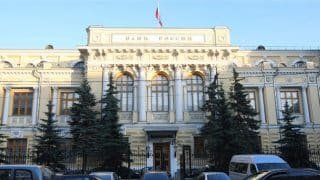
[ Editor’s Note: Mr. Engdahl has a grand slam economic piece for us today on his panel deliberations at the St. Petersburg Economic Conference. Internal Russian economy analysis and strategic planning is rarely covered in plain English in the West.
He describes the chokehold the Russian Central bank has on the economy with its high rates, when the West is still carrying low ones way past the worst days of the recession. His plan to have a stellar selection of home grown economists and industrialists pick through all the successful models of major State economic recoveries to find those most suited for Russia.
William’s personal favorite is the national bonds issued for the top infrastructure projects with the best economic ripple effects in terms of job creation and new tax revenues. Unlike many countries, Russia has huge natural resources as credit, plus a well-educated public.
And I like his idea that not only can such bonds not be sold to foreigners, but they cannot be acquired in the aftermarket to eliminate any foreign market manipulation, which is so popular today. Domestically produced infrastructure is “sanctions proof”, and the interest paid out on the bonds continues to circulate within the country.
The only thing missing in this wonderful piece is his making no direct reference to the New Silk Road (NSR). Yes, he talks of the Central Asian cooperation, but the play here is to get the NSR going in the face of what we know to be this crazy attempt to encircle Russia and China with the US Navy and NATO.
Nothing contributes more to a national defense than to have a vibrant infrastructure for efficient movement for military forces, with a layered network. Especially with Russia’s low cost supply of high tech, domestically produced weapons gives it an edge as a reliable supplier to its defense partners.
I was not aware that Russia has, as William describes, a lot of Westward leaning economic czars, who have been behind the tough love policies of high interest rates. With the lowest debt to GNP ratio of any modern country, it could comfortably run the current 17% figure up to 25 to 30%, with domestically issued bonds to crank up the infrastructure monies needed over the next five years. I give this a top read recommendation… Jim W. Dean ]
__________
– First published … July 2, 2016 –
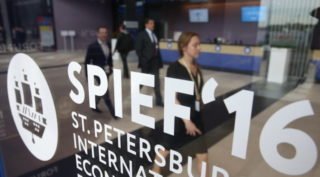
For three days this month, June 16-18, I had the opportunity to participate as a panelist in the annual St. Petersburg International Economic Forum in Russia. I’ve been in Russia many times since the Ukraine US-backed coup d’état of February 2014, and the deliberate escalations of NATO military and economic tensions and sanctions against the Russian Federation.
This year’s forum, my second as participant, gave me a rare opportunity to speak with leading representatives from every sector of the Russian economy- from CEOs of the energy sector to the Russian Railways to the national Russia Grid electricity provider to numerous small and mid-sized businessmen, to a wide range of economists. It sharpened my perception of just how precarious the situation of Russia today is.
What became clearer to me in the course of the three days of discussions in St Petersburg is precisely how vulnerable Russia is. Her Achilles Heel is the reigning ideology that controls every key economic post of the Government of the Russian Federation under Prime Minister Dmitry Medvedev.
Under the terms of the Russian Constitution adopted in the chaos of the Yeltsin years and enormously influenced, if not literally drafted, by Russia’s foreign IMF advisers, economic policy is the portfolio responsibility of the Prime Minister and his various ministers of Economics, Finance and so forth. The Russian President, today Vladimir Putin, is responsible for defense and foreign policy.
Making the job virtually impossible of reviving credit flows to fuel genuine real investment in urgently needed infrastructure across the vast land expanse of Russia is the Central Bank of Russia. The Central Bank of Russia was given two constitutionally-mandated tasks when it was created as an entity independent from the Russian Government in the first months of the Russian Federation following the breakup of the Soviet Union. It must control Russian domestic inflation and it must stabilize the Ruble against major foreign currencies. Like western central banks, its role is almost purely monetary, not economic.
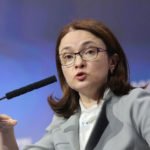
In June, 2015 when I participated the first time in the St Petersburg forum, the Russian Central Bank base rate, interest charged to banks, was 11%. In the peak of the so-called Ruble crisis in January 2015 it had reached 17%.
Expectations last summer were that Elvira Nabiullina, the central bank governor since 2013, would begin to bring central rates rather rapidly down to manageable levels, especially at a time when central banks such as the European Central Bank, the US Fed and the Bank of Japan were lowest in some 500 years at zero or even negative.
Further, since January 2016 oil prices, a significant factor in the Ruble strength as Russia is the world’s largest oil exporter, began a rise of more than 60% from lows below $30 a barrel in early January to levels near $50 six months later.
That lowering of rates by the Central Bank hasn’t happened. Instead it is slowly killing the economy. One year later, in early June, 2016 the Russian Central Bank under Governor Nabiullina made the first rate cut since June 2015…to a still-deadly 10.5%. Perhaps it’s notable that monetarist Nabiullina was named by the London Euromoney magazine as their 2015 Central Bank Governor of the Year. That should be seen as a bad omen for Russia. Equally ominous was the fulsome praise the head of Washington’s IMF had for Nabiullina’s monetarist handling of the early 2015 Ruble crisis.
_________
Operation Success…patient died
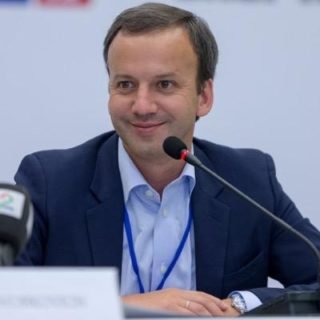
What I experienced in my discussions at the conference–this year with record attendance of more than 12,000 business people and others from around the world–was a sense that there coexist two Russian governments, each the polar opposite of the other.
Every key economic and finance post is firmly occupied at present by monetarist free-market liberal economists who might be called “Gaidar’s Kindergarten.” Yegor Gaidar was the architect, along with Harvard’s Jeffrey Sachs, a Soros-backed economist, of the radical “shock therapy” that was responsible for the economic hardships that plagued the country in the 1990s resulting in mass poverty and hyperinflation.
Today’s Gaidar Kindergarten includes former Finance Minister Alexei Kudrin, another Euromoney favorite in 2010 as international Finance Minister of the Year. It includes Economics Minister, Alexey Ulyukaev. It also includes Medvedev’s Deputy Prime Minister, Arkady Dvorkovic.
Dvorkovic, a graduate of Duke University in North Carolina, is a protégé, directly serving during his earlier years under Yegor Gaidar. In 2010 under then Russian President Medvedev, Dvorkovic proposed a lunatic scheme to make Moscow into a world financial center by bringing in Goldman Sachs and the major Wall Street banks to set it all up. We might call it inviting the fox into the hen house. Dvorkovic’s economic credo is “Less state!” He was the chief lobbyist in Russia’s WTO accession campaign, and tried to ram through rapid privatization of the assets that remain state-owned.
This is the core group around Prime Minister Dmitry Medvedev today who are strangling any genuine Russian economic recovery. They follow the western playbook written in Washington by the International Monetary Fund and the US Treasury. Whether they do this at this stage out of honest conviction that that is best for their nation or out of a deep psychological hatred for their country, I’m not in a position to say.
The effects of their policies, as I learned in my many discussions this month in St Petersburg are devastating. In effect, they are self-imposing economic sanctions on Russia far worse than any from the USA or EU. If Putin’s United Russia party loses the elections on 18 September, it will be due not to his foreign policy initiatives for which he still enjoys 80+% popularity polls. It will be because Russia has not cleaned the Augean Stables of the Gaidar Kindergarten.
_________
Obeying Washington Consensus
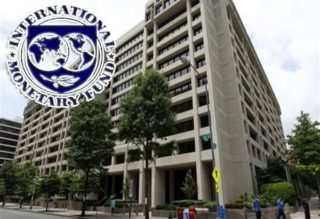
From various discussions, I learned to my shock that the official policy of Medvedev’s economic team and of the Central Bank today is to follow the standard IMF “Washington Consensus” budget austerity policies. This is so despite the fact that Russia, years ago, repaid its IMF loans and is no longer under IMF “conditionalities,” as it was during the 1998 Ruble default crisis.
Not only that, Russia has one of the lowest debt-to-GDP ratios of state debt of any major country in the world, a mere 17% while the USA “enjoys” a 104% ratio, the Eurozone countries have an average debt level of over 90% of GDP, far from the mandated 60% Maastricht level. Japan has a staggering 229% debt-to-GDP.
The official economic policy today of the Central Bank of Russia with its absurdly high rates is to reduce an inflation rate of a mere 8% to its target of 4% through an explicit policy of budget austerity and consumption reduction. No economy in recorded history has managed an economic policy under forced reduction of consumption, certainly not Greece nor any African nation.
Yet the Russian Central Bank, as if on automatic pilot, religiously sings the Gregorian death chants of the IMF as if they were a magic formula. If Russia continues down this Central Bank monetarist path it may well soon be that, “the operation was a success, but the patient died,” as the cynical saying goes.
_________
Stolypin Club
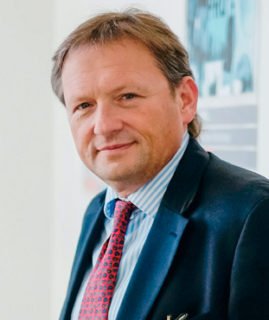
There is a coherent, experienced and growing opposition to this liberal western cabal around Medvedev. They at present are represented in something called the Stolypin Club, created by a group of Russian national economists in 2012 to draft comprehensive alternative strategies to lessen Russia’s dependence on the dollar world and boost growth of the real economy.
I had the honor of appearing on a major panel together with several members and founders of this group. It included a co-founder of the Stolypin Club, Boris Titov, a Russian businessman and open ideological foe of Kudrin, who is chairman of the All-Russian “Business Russia” organization.
He insists on the need to increase domestic production of goods, stimulate demand, attracting investment, tax cuts and the cuts to the refinancing rate of the Central Bank. Titov is a central figure today in Russia’s recent China initiatives. He served as chairman of the Russian part of the Russian-Chinese Business Council, and member of the Presidium of the National Council on Corporate Governance.
My panel also included Stolypin Club leading members Sergei Glazyev, Adviser to the President of the Russian Federation, and Andrey Klepach, Deputy Chairman of the VEB Bank for Development. Klepach, a co-founder of the Stolypin Club, was formerly Deputy Economics Minister of Russia, and director of the macroeconomic forecasting department of the Ministry of Economic Development and Trade.
My impression was that these are serious, dedicated people who understand that the heart of true national economic policy is human capital and human well-being not inflation or other econometric data.
_________
Stolypin Bonds

At this point, expanding on my remarks to the audience in St. Petersburg, I would like to share a proposal for getting Russia’s vast and rich economy and people into a positive growth path despite sanctions and high central bank interest rates.
All the necessary elements are there. The country has the largest land expanse of any nation in the world. It has arguably the richest untapped mineral and precious metals resources. It has some of the finest scientific and engineering minds in the world, a skilled workforce, highly intelligent wonderful people.
What is lacking is the coordination of all the instruments to make an harmonic national economic symphony. Still there is a fear of being accused of reversion to Soviet Gosplan central planning among too many in Government positions. Only partly are the scars of Russia’s national trauma much healed under the years of Putin, someone who has allowed Russians to again feel respected in the world.
The scars came not only from the travails of communism. They came from the manner in which the United States under President George H.W. Bush in the early 1990’s and after under every US president since, has gone out of its way to humiliate and heap contempt on Russia and everything Russian. Sadly, those scars, consciously or unconsciously, still hamper many in positions of responsibility across Russia.
On the positive side, there are many successful models of growing an economy in a positive, debt-free manner.
One is Germany following the World War in the 1950’s through the state special credit authority, Kreditanstalt für Wiederaufbau (The Credit Authority for Redevelopment), which restored Germany from the ashes of war with subsidized interest rates. It was also used to rebuild the former German Democratic Republic after unification in 1990.
There is the successful model in the 1960s under French President Charles de Gaulle, called Planification, where every region with representatives of all major social groups—farmers, small-to-midsize businesses, labor, large companies—met and debated their regional priorities and sent them to a central body to draft the Five Year Plan. Five years not because of Soviet imitation but because major infrastructure requires a minimum of five years and the possible correction of ineffective or outdated plans needs a short span of five years.
I would propose establishing of a unique, separate State Authority for National Infrastructure Development, independent of the Central Bank of Russia or of the Finance Ministry. It ideally would have an impartial overseeing board of most respected and economically experienced Russian nationals from each region. Perhaps it would make sense to place it directly under the responsibility of the President. It could adopt the “best practices” of the above two models as well as others successful in recent years such as South Korea after the 1950’s.
The model developed by Russia’s Pyotr Arkadyevich Stolypin, the namesake of the Stolypin Club group of national economists today, is appropriate. As Czar Nicholas II’s appointed chairman of the Council of Ministers, Stolypin served as both Prime Minister and Minister of Internal Affairs from 1906 to 1911. He introduced successful land reforms to create a class of market-oriented smallholding landowners, and construction of a second track of Sergei Witte’s monumental Trans-Siberian Railway, one along the Amur River border with China. He began to transform Russia’s economy dramatically.
I would propose the suggested separate State Authority for National Infrastructure Development be given the authority to issue special “Stolypin Bonds” to finance a wide variety of agreed national infrastructure projects that would rapidly accelerate the Eurasian economic integration and creation of vast new markets with China, Kazakhstan, Belarus on to India and Iran.
The Stolypin Bonds would be issued to only Russian nationals, pay an attractive and fair interest rate, and not transferable to foreign bondholders. Because of this internal financing, it would not be vulnerable to western financial warfare. The debt incurred would not be any problem because of the quality of the investment and because of the present extraordinary low debt levels of the Russian State. Emergency conditions require extraordinary solutions.
Sale of the special bonds would be direct from the new state authority, and not via banks, thus increasing the possible interest rate attractiveness for the Russian population. Bonds could be distributed to the public through the national network of Post Offices, minimizing distribution costs. As was done in Germany and other countries previously with great success, the bonds could be collateralized by something Russia has more of than anyone—its land.
Because the bonds go exclusively to infrastructure projects deemed national priority, they would be anti-inflationary. This is because of the “secret” of government infrastructure investment. By making the arteries of the national economy flow more efficiently across all Russia, where today, for lack of modern infrastructure, none exist. They will create new markets, and significantly lower transportation costs.
The new enterprises and the newly-created jobs to construct the infrastructure will repay the State Budget manifold in raised tax revenues for a prospering economy. It is the opposite of the current, failed Central Bank “consumption-reduction” anti-inflation model.
This expanding investment in turn would undercut current Central Bank power over the national economy until such time the members of the Duma realize it is time to roll-back the 1991 Central Bank law and reincorporate it into the state. State sovereign control over its money is one of the most essential attributes of sovereignty.
Objectively, today Russia possesses everything she needs to become an economically prosperous world economic giant and technology pacesetter in addition to her already made decision to become world leading agriculture exporter of GMO-free, natural agriculture.
What was clear from my St. Petersburg talks this time is that events are approaching a decisive “do or die” turn in which either economic policy is formally put into the hands of competent national economy circles such as those of Boris Titov, Andrey Klepach and Sergey Glazyev, or she will succumb to the insidious poison of Washington Consensus and liberal free market nonsense. After my recent private talks I am optimistic regarding prospects for a positive change.
F. William Engdahl is strategic risk consultant and lecturer, he holds a degree in politics from Princeton University and is a best-selling author on oil and geopolitics, exclusively for the online magazine “New Eastern Outlook”.
______________
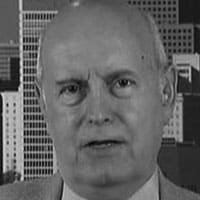
Jim W. Dean is VT Editor Emeritus. He was an active editor on VT from 2010-2022. He was involved in operations, development, and writing, plus an active schedule of TV and radio interviews. He now writes and posts periodically for VT.
ATTENTION READERS
We See The World From All Sides and Want YOU To Be Fully InformedIn fact, intentional disinformation is a disgraceful scourge in media today. So to assuage any possible errant incorrect information posted herein, we strongly encourage you to seek corroboration from other non-VT sources before forming an educated opinion.
About VT - Policies & Disclosures - Comment Policy

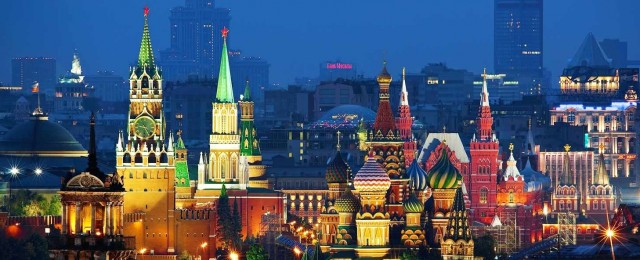



Comments are closed.